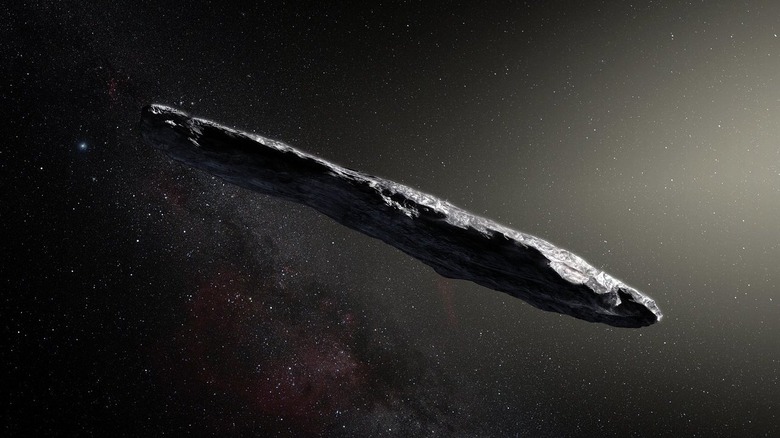When NASA Pointed Its Spitzer Telescope At Oumuamua They Couldn't Even See It
If there's one space story that 2018 will be remembered for its the numerous ongoing investigations of the first interstellar object ever to be detected by mankind. Oumuamua, the elongated chunk of space stuff that might be an asteroid or might be a comet (or might be something else entirely), slipped around our Sun and back out into space so fast scientists barely had time to spot it. Now, NASA says it has a better idea of its size.
In the days following the detection of Oumuamua back in late 2017, NASA swung its Spitzer Space Telescope in the object's direction, hoping to learn more about what the cigar-shaped body was and where it was headed. It had long since passed its closest approach to Earth and was already headed back out into space after swinging around the Sun. When NASA commanded the Spitzer telescope to observe it, it didn't see anything at all.
Now, you might imagine that not being able to see the object at all would be a huge disappointment for researchers, but that's not entirely true. Sure, they'd have loved to see more of the strange visitor, but not being able to see it meant that the object, at its current distance, was too small to see, adding yet another valuable data point.
"'Oumuamua has been full of surprises from day one, so we were eager to see what Spitzer might show," David Trilling, lead author of a new study published in The Astronomical Journal, explains. "The fact that 'Oumuamua was too small for Spitzer to detect is actually a very valuable result."
As NASA's Jet Propulsion Laboratory notes in a new blog post, the Spitzer telescope's inability to detect Oumuamua using its infrared hardware puts a size limit on the object. As NASA explains:
Using three separate models that make slightly different assumptions about the object's composition, Spitzer's non-detection limited 'Oumuamua's "spherical diameter" to 1,440 feet (440 meters), 460 feet (140 meters) or perhaps as little as 320 feet (100 meters).
This supports observations of the object made by the Hubble Space Telescope which suggested the object was less than a half mile on its longest edge, but shrinks the upper limit of that estimate by about half. Hubble's more generous observations are thought to be a byproduct of Oumuamua being much more reflective than all other comet observations in our own Solar System, causing it to appear larger from a distance than it might really be.
